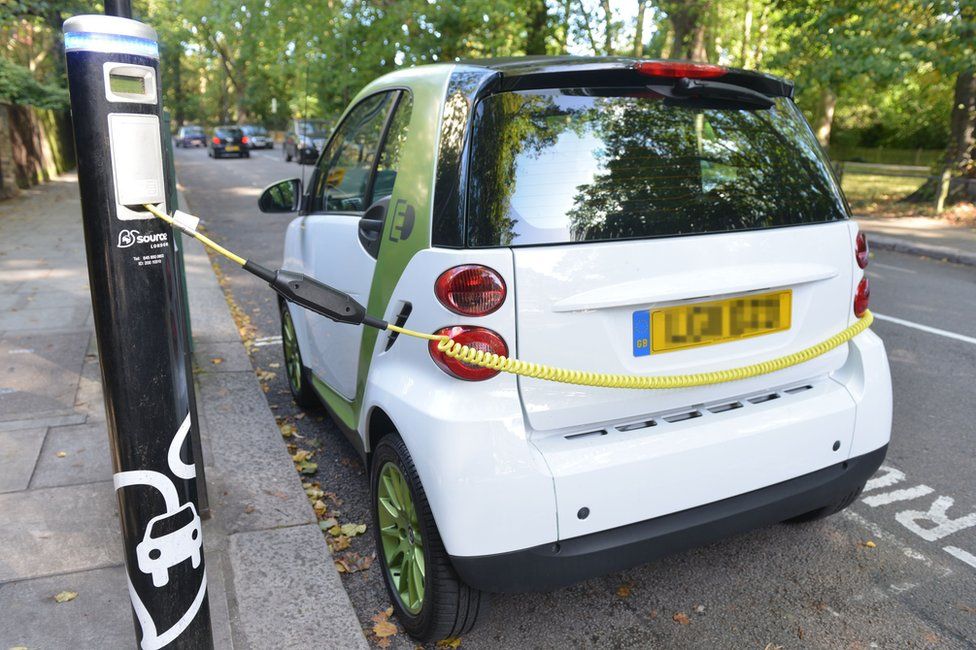Electric cars set to get road priority in clean air zones
- Published

Electric cars could be given priority at traffic lights and exempted from one-way systems, under new proposals.
The government's planned clean air zones are intended to encourage drivers to choose less-polluting electric cars.
Proposed for five English cities by 2020, the clean air zones will also introduce restrictions on older, polluting commercial vehicles.
But AA president Edmund King said drivers would be "baffled" by separate rules for electric cars.
Quality of life
The Department for the Environment, Food and Rural Affairs (Defra) has told Birmingham, Leeds, Nottingham, Derby and Southampton to introduce clean air zones within four years to reduce pollutants, which are linked to the deaths of 40,000 people a year in the UK.
The clean air zones are the government's response to a UK Supreme Court ruling, which ordered it to take action to meet European limits on air pollution.
Environment minister Therese Coffey said: "We need to tackle air pollution and creating Clean Air Zones will improve the quality of life for people who live and work in our towns and cities, both now and in the future."
Alan Andrews, a lawyer for ClientEarth, an environmental law group which brought the Supreme Court action, said the plan was "too little, too late".
"Requiring just five cities in the UK to introduce clean air zones doesn't solve a national problem which causes thousands of premature deaths. Other local authorities won't introduce voluntary clean air zones unless they are made to, or paid to," he said.
New road layouts
These five cities were chosen for their high levels of nitrogen dioxide, often caused by diesel fumes. Other local authorities in England will be able to create clean air zones voluntarily.
Within the zone, local councils can create new road layouts allowing electric vehicles (EVs) to bypass one-way systems or get priority at junctions. They could also be given preferential parking spaces and lower charges.
A Defra spokeswoman said: "It may be that in a one-way system they have an extra lane in which electric vehicles can go against the traffic or that they have filter lanes at traffic lights."
According to the AA, eight out of 10 drivers support action on clean air. But Mr King said many drivers believed low-emission zones were just money-making schemes.
"Incentives for electric vehicles such as use of bus lanes or preferential parking are good short term catalysts, but when EVs become mainstream congestion will still be the big issue. We are still somewhat baffled as to how EVs can realistically be given priority at traffic lights," he said.
Charges and restrictions
Councils with clean air zones are also expected to restrict access to older buses, coaches, taxis and lorries with emit high levels of gases such as nitrogen dioxide. Birmingham and Leeds also plan to extend restrictions to polluting vans.
This could mean a charging zone for commercial vehicles with high levels of emissions, or by introducing stricter licensing requirements for buses and taxis.
These charges and restrictions will not be applied to private cars or motorbikes, Defra said.
Registrations of new ultra-low emissions vehicles, such as plug-in electric cars, are rising sharply. Between April and June 2014, there were 2,738 electric vehicles registered compared with 9,657 in the same period this year - a rise of 250%.
A £35m plan to increase the use of electric vehicles was also launched by the Department for Transport, offering thousands more charging points across the country.
- Published29 April 2015
- Published5 September 2016